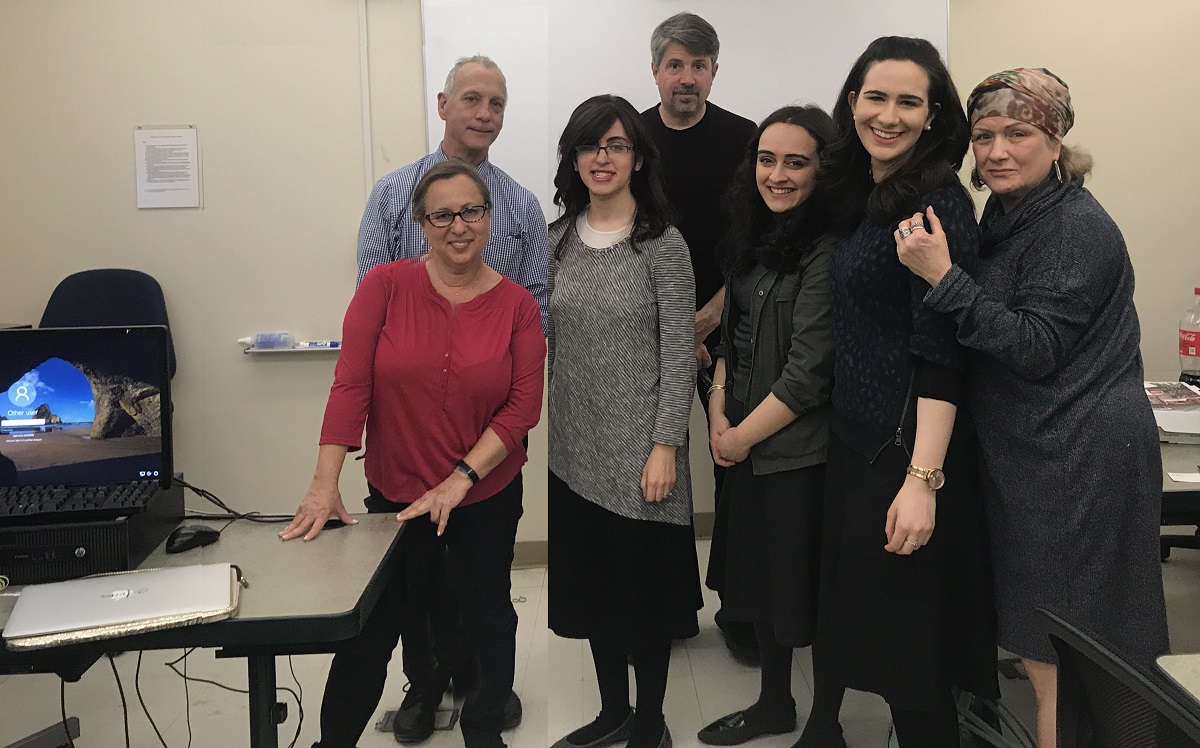Landing and Keeping a Graphic Design Job
Alumni Offer Five Tips for Current Students

How do you succeed as a graphic designer? This was the question addressed to panelists at the first-ever alumni panel hosted by the Lander College of Arts and Sciences in Flatbush’s Digital Multimedia Design Society.
Four successful LAS alumni who work as graphic designers—Toby Rubenstein of Go! Group; Shaindel Plumer of The Five Towns Jewish Times; Reena Abady of We Are Miller, and Yael Dolinger of The Lakewood Shopper— shared tips about their own success in the field and offered advice to current LAS students considering a career in the design world.
“To succeed as graphic designers our students need to be unafraid to think outside the box,” said organizer Susan De Castro, a professor and the coordinator for LAS’s Digital Multimedia Design Department. “They should never underestimate their resources and creativity.”
- Work as Part of Team
While graphic designers can work as freelancers, all four shared the sentiment that their work had improved by working as part of a team. “You need to work around other people to improve,” said Rubenstein. “A good creative director pulls out the best in you. Your work won’t improve if you sit at home designing in a vacuum.”
- Get Experience Early
Abady spoke of how she held her first job while a student LAS. “I was able put into practice what I learned in school,” said Abady. Rubenstein added: “The only way you can learn is by doing. You’re only going to reach your potential by venturing out of your comfort zone.”
- Update Your Portfolio
Not only it is vital to showcase your latest work to employers, it’s also a good way to gauge your own progress. “Line up your artwork and you can see your work improve,” said Plumer.
- Stay Current
Pay attention to current trends in the graphic design world. Watch Youtube videos from graphic designers and follow graphic designers on Instagram. Not only will this provide you with inspiration but it’s something to talk about during a possible job interview. “Being able to talk about design shows your interest in the field,” counseled Rubenstein. “Interviewers want to see that you’re passionate about being a graphic designer, not someone who’s just working for a paycheck.”
- Ask Questions
Each panelist mentioned a particular instance when a client rejected a piece of artwork and how the fix—guided by client’s revisions—had been minor. “Don’t take a ‘no’ as a wholesale rejection of your talent,” said Plumer who detailed how a client rejected one of her advertisements because of an unrelated issue. “If you ask why a client doesn’t like something, they may just have a minor reason that can either be addressed or the rejection might be because of another factor you aren’t aware of.” Though panelists also said that there may be times when a client simply doesn’t like the work, but finding out where you went wrong will help you on your next attempt.

